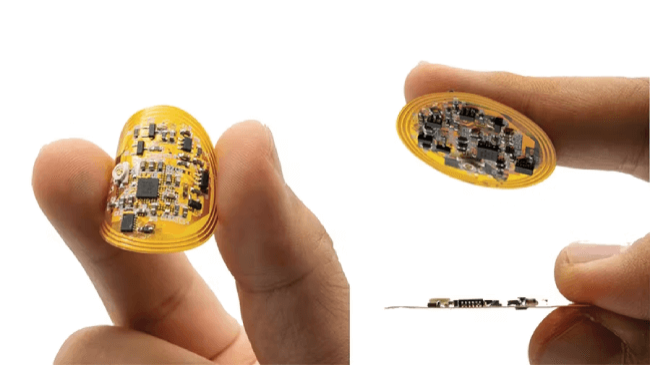Researchers Create a Smart Bandage That Can Speed Up Healing
Insights | 12-12-2022 | By Robin Mitchell
Recently, researchers developed a new bandage that not only provides monitoring capabilities but can also speed up the rate of healing via electrical stimulation. What challenges do wearable devices face, what did the researchers develop, and how could it help heal injuries in the future?
What challenges do wearable medical devices face?
While researchers and engineers continue to make great leaps in the field of wearable electronics, the challenges that wearable electronics face continue to hold them back. To this day, the only practical wearable devices in mass production are smartwatches, and even then, their adoption is less widespread than many would hope.
The reason for the lack of wearable devices primarily comes down to the inherent rigidity of modern electronic components. Simply put, a wearable device should be comfortable to wear, which means that it should move and flex organically with the body, but as most electronic components are small ridged parts, they cannot flex easily (if at all). Some engineers are trying to get around this challenge with the use of flexible substrates, but even then, the components that sit on these substrates are inflexible, leading to fatigue (and, thus, solder bonds breaking apart).
Another challenge wearable devices face is that flexible components are far too primitive for modern tasks. Even though great strides have been made by companies such as PragmatIC, who recently demonstrated a fully working flexible ARM core, the reliance of NMOS-type logic and the inability to shrink printed transistors make these devices impractical for modern computing needs.
Researchers develop smart bandages that can speed up healing
Recognising the power of electrical stimuli and smart sensors, researchers have recently published their works on a smart bandage that not only has the ability to actively measure the rate of healing of wounds but also speed up the healing process while reducing scarring. The device, which is comprised of standard off-the-shelf components, uses a flexible substrate to attach itself to the skin, and the use of wireless energy harvesting via an RF receiver provides power.
The sensor itself integrates a microcontroller, impedance and temperature sensors, an antenna, and an electrical stimulator. These components are used for monitoring a wound’s status, transmitting the current state, and increasing the speed of healing via direct electrical stimulation. To bond the sensor to the wound, a hydrogel is used that helps keep out infection and provides a direct medium with which the sensor can interface.
However, the electrical stimulation by the sensor is itself triggered by measurements taken from the wound, which allows the sensor to make more intelligent decisions over the healing process. Furthermore, the direct sensing capabilities can also identify deterioration and potential infection, which not only aids in the healing process but also reduces scarring.

How could such bandages change the medical industry?
Currently, the bandage is only a proof-of-concept and not a design that could be implemented in the medical industry for numerous reasons, including its sensitivity and lack of long-term testing. But if proven to be reliable, the future of medical care could switch heavily to IoT and other sensor-related technologies. In fact, such sensors will likely be used in conjunction with AI to provide predictive care and improve AI’s diagnostic capabilities in healthcare.
However, what makes this story particularly interesting is that electrical stimulation is being used to accelerate the rate of healing. Not long ago, we reported on researchers who have developed biodegradable devices that can accelerate bone repair via direct electrical stimulation, and such devices could help reduce the time to make a full recovery. If doctors can utilise such technologies, it could potentially reduce the chance of infection by closing wounds faster, as well as reduce the time spent in the hospital during post-op recovery. Less hospital time equates to lower demand for medical professionals and more beds, and this could be crucial for the future of the NHS, which is already struggling to cope.
Finally, smart bandages could even find their way into the domestic environment if made cheap. Of course, such dressings can’t heal all wounds, and A&E will be needed in many cases, but the ability to monitor the condition of a cut, even a small one, could provide early warning signs of complications such as sepsis.

